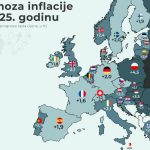ZAGREB, May 28, 2018 – The Vukovar Museum in Exile permanent exhibition, consisting of some 1,700 works of art, was opened at the Vukovar Town Museum on Sunday on the occasion of the 70th anniversary of its first permanent exhibition and the 20th anniversary of its return to Vukovar after its exile in the 1991-95 war.
The permanent exhibition was opened by Culture Minister Nina Obuljen Koržinek, who said that the event marked the completion of presentation of the Vukovar Town Museum collections as part of a project by the Croatian government and the Council of Europe Development Bank called “Restoration and Revitalisation of Cultural Heritage Ilok-Vukovar-Vučedol”, which was being implemented by the Culture Ministry.
Those collections are the Eltz Castle permanent exhibition and the Bauer Collection.
“At the time when it was created, the collection was an expression of great solidarity among artists and each donated work of art was a sign of faith in the return to Vukovar… The government and the Culture Ministry believe that culture and the presentation, preservation and restoration of cultural heritage can contribute to the restoration of life and development in this part of the country,” said Obuljen Koržinek.
Answering reporters’ questions about the fate of works or art gone missing in the Homeland War and their return, Obuljen Koržinek said that of some 30,000 works of art gone missing in the war, around 29,000 had been claimed back. “Around 1,000 works of art remain missing, and those are mostly works of art belonging to Serb Orthodox churches and monasteries in Croatia and their return is under way. As for missing works of art that were not registered as such, we no longer believe that they can be claimed back through mechanisms of inter-state cooperation and such works of art are being looked for by Interpol,” the minister said.
The creation of the Vukovar Town Museum collection in exile, which now contains around 1,700 works of art, was initiated in 1992 and the initiative was joined by many Croatian artists as well as artists from Italy, Austria, Germany, Poland, France and other countries, said Branka Šulc, former head of the Museum Documentation Centre, of which the Vukovar Town Museum was part during its exile.







